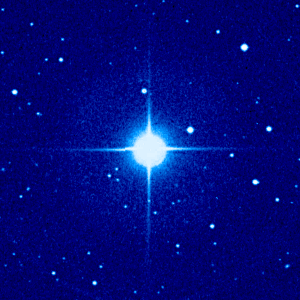Astronomy Picture of the Day
Discover the cosmos! Each day a different image or photograph of our fascinating universe is featured, along with a brief explanation written by a professional astronomer.
December 1, 1995

51 Pegasi: A New Planet Discovered
Credit:
UK Schmidt Telescope,
Skyview
Copyright:
Royal
Observatory Edinburgh, Anglo-Australian Observatory, and AURA